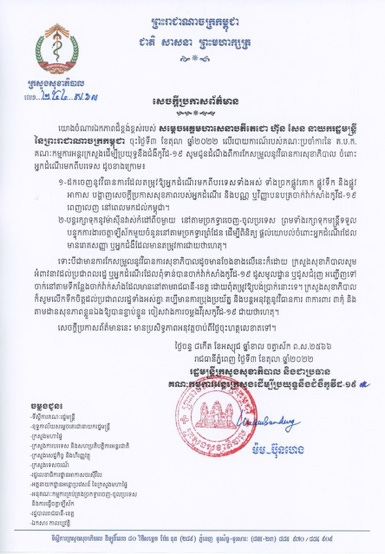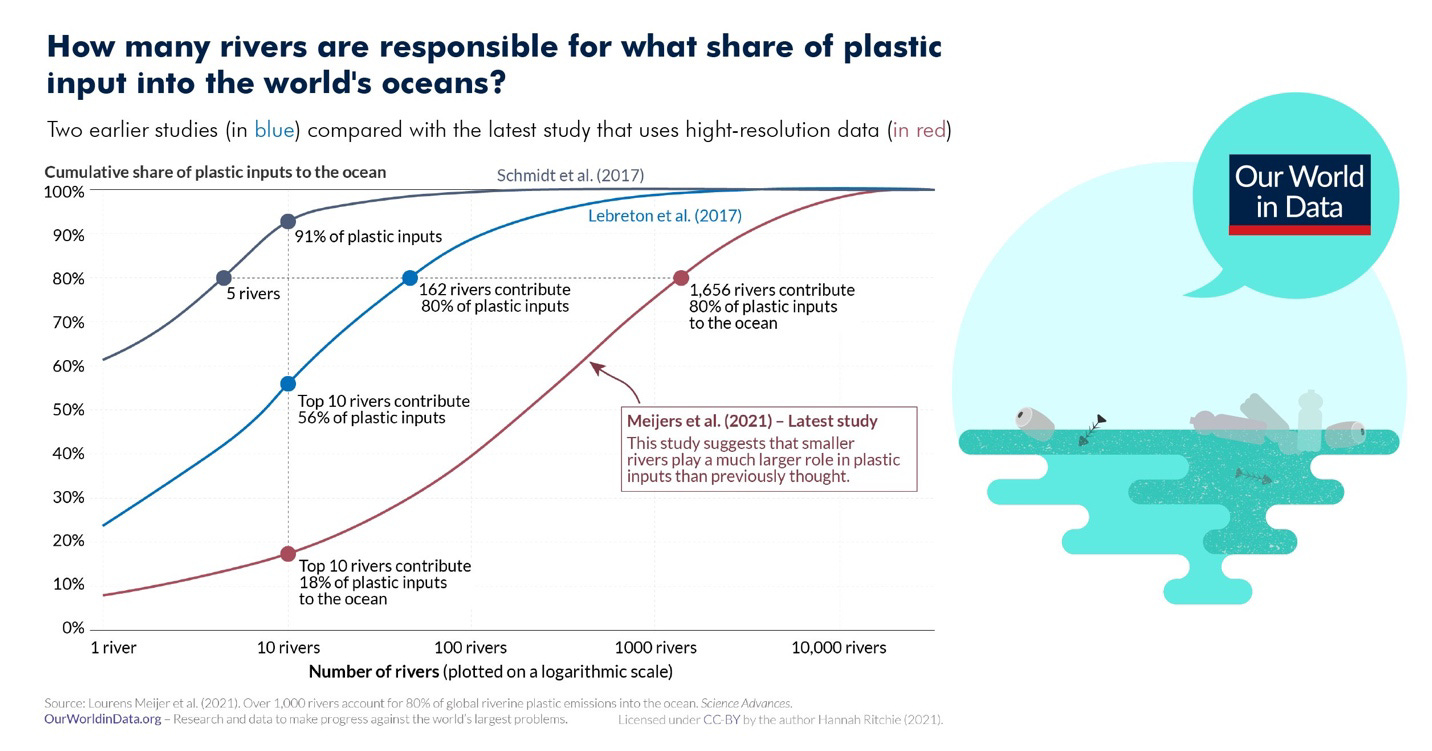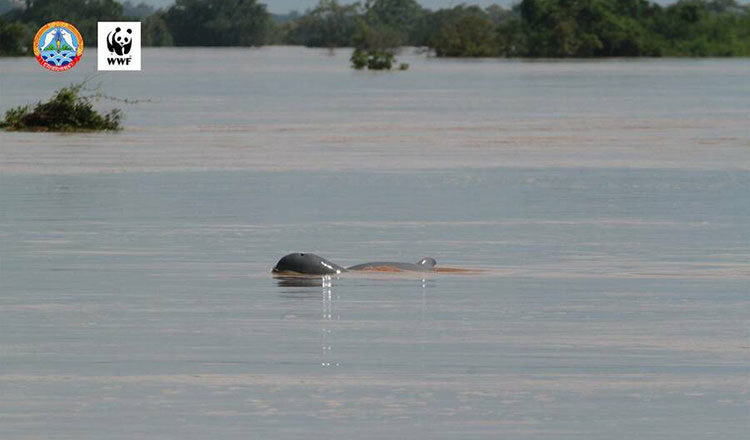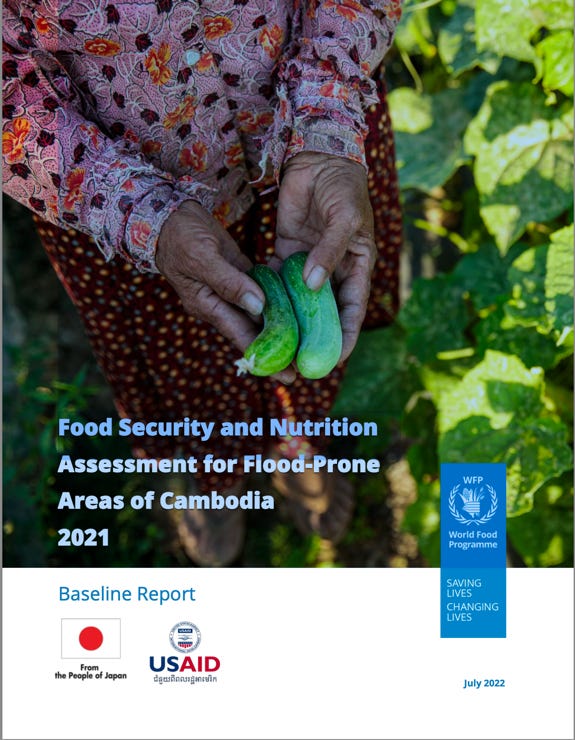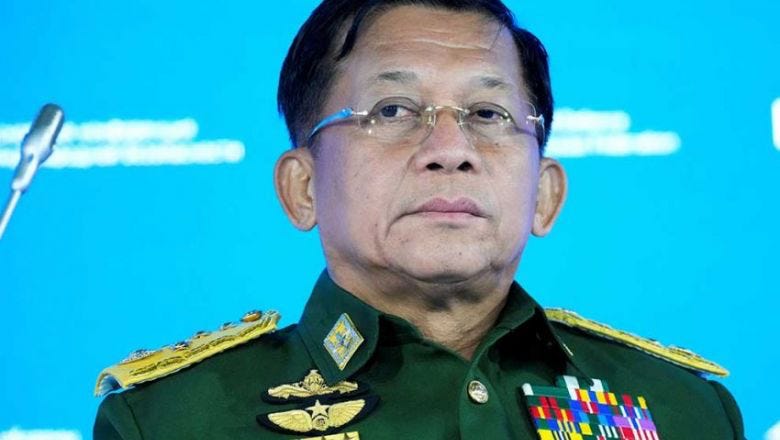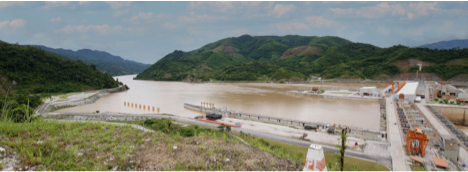UPDATE: Travellers to Cambodia no longer require a vaccination certificate. A Mekong dolphin calf has been caught on film, the EU has launched an SOS water project, and new research looks at just how much plastic is in the world’s rivers. Myanmar is not invited to Asean events and MRC reports only moderate effects from two Mekong dams. Today is our second edition on the Substack publishing platform, so be sure to let us know how to improve the Long Mekong Daily.
CAMBODIA – VACCINATION CERTIFICATE
Health & vaccination certificates are no longer required for travelers entering Cambodia. However, travellers will still be asked whether or not they have been vaccinated. As the world’s first post-modern pandemic, which resulted in millions of deaths, hopefully the lessons of collective and rapid response have been learned. Cambodia, was one of the best performing countries to manage the pandemic’s impacts and quickly enter the recovery phase.
RIVERS AND PLASTIC WASTE
Plastic waste increasingly accumulates in the marine environment, but data on the distribution and quantification of riverine sources required for development of effective mitigation are limited. Our model approach includes geographically distributed data on plastic waste, land use, wind, precipitation, and rivers and calculates the probability for plastic waste to reach a river and subsequently the ocean. This probabilistic approach highlights regions that are likely to emit plastic into the ocean. We calibrated our model using recent field observations and show that emissions are distributed over more rivers than previously thought by up to two orders of magnitude. We estimate that more than 1000 rivers account for 80% of global annual emissions, which range between 0.8 million and 2.7 million metric tons per year, with small urban rivers among the most polluting. These high-resolution data allow for the focused development of mitigation strategies and technologies to reduce riverine plastic emissions. Science.org, 4 October 2022
MEKONG DOLPHIN CALF
An estimated two-week-old dolphin calf was spotted in Kampi deep pool in Kratie province, according to the Fisheries Administration. The research team of the Government’s Fisheries Administration and WWF photographed the new dolphin calf on Oct. 2, and confirmed it was the sixth calf recorded this year, it said. The calf was swimming together with other four adult dolphins when the research team spotted it during their survey in the dolphin habitat area located about three kilometers upstream of Kampi deep pool in Sambo district, Kratie province. In 2021, six dolphin calves were recorded. Dolphin (Orcaella brevirostris) is ranked as critically endangered on the IUCN Red List, the highest international threat ranking for endangered species. The Mekong population was estimated at 89 individuals. The Fisheries Administration and WWF will engage the local authorities in protecting the habitat areas where calves were recorded, while continuing to reinforce the fisheries law and dolphin conservation measures across the whole dolphin habitat along the Mekong from Kratie to Stung Treng provinces. These will be done through river guards ‘regular patrols and engaging fishery communities’ participation in alternative livelihoods, initiatives and conservation of the remaining dolphins and mega fish species by stop using fishing practices prohibited by the laws, particularly gillnets and electrofishing. Khmer Times, 4 October 2022
VIETNAM ETHNIC CULTURE & TOURISM
A range of activities are being held at the Vietnam National Village for Ethnic Culture and Tourism to introduce the cultural space of the Mekong Delta region. In focus are re- enactments of the Ok Om Bok (Moon Worshipping) Festival of the Khmer ethnic minority people in the Mekong Delta province of Tra Vinh. Other activities include the introduction of cultural features of the Khmer people, including Cham Rieng Cha Pai art, which is part of the national intangible cultural heritage, and the Kathina robe offering ceremony. Besides, the introduction of Khmer pagoda, the only one of its kind in Hanoi, will be also included in the agenda.The event runs from October 1-30, and expects to bring an interesting cultural space from the southern region to audience in the capital. Vietnam Plus, 4 October 2022 Watch on YouTube
FOOD SECURITY
This survey assessed the food security and nutrition situation among a sample of 3,600 households residing in flood-prone areas across Cambodia, focusing on six provinces located around Tonle Sap Lake (Battambang, Pursat, Kampong Chhnang, Siem Reap, Kampong Thom) and along the Mekong River (Kampong Cham).The findings from the current survey and three follow-up surveys to be conducted among the same households throughout 2022 will provide insights into the needs and vulnerabilities of households and communities that
are frequently exposed to floods. This information is essential for government policymakers and to enable non-governmental organizations doing relief work to design adequate response options. Download Report
SOS WATER PROJECT
Water resources around the globe are under increasing stress. Among other factors, climate change, rising food and energy demand, and improving living standards have led to a six-fold increase in global water withdrawals over the last century, with significant consequences for water quality and availability, ecosystem health, biodiversity, as well as social stability. The SOS-Water Project endeavors to set out the boundaries within which the Earth’s capacity to provide life-support systems for humanity is not endangered, and humanity’s capacity to adapt to environmental changes is not overburdened. Crossing such thresholds or tipping points in the complex Earth system could result in abrupt and irreversible ecological change. To safeguard a reliable and sufficient water supply for humans and ecosystems in the future, it is therefore essential to define an SOS for global water resources under changing conditions. By advancing and linking water system models like the IIASA Community Water Model (CWatM) with models from sectors such as agriculture and energy, biodiversity, or sediment transport, the SOS-Water Project aims to lay the foundations for a holistic assessment framework of water resources across spatial scales. Based on five case studies of river basins in Europe and Vietnam – the Jucar River Basin in Spain, the Upper Danube region, the Danube and Rhine River deltas, and the Mekong River Basin – an interdisciplinary team of researchers from ten institutions across eight countries* will develop a multidimensional SOS for water. The framework will enable the assessment of feedback loops and trade- offs between different dimensions of the water system and help address pressing global, regional, and local challenges. Mirage News, 4 October 2022
MYANMAR
Cambodia has not invited Senior General Min Aung Hlaing, chairman of Myanmar’s ruling State Administration Council (SAC), to the 40th and 41st ASEAN Summit and related meetings scheduled for next month in Phnom Penh. The government will instead invite a non- political representative from Myanmar to attend. The move comes as Myanmar has shown a lack of real progress in implementing the ASEAN five-point consensus (5PC) and its pursuit of openly provocative policies such as the execution of pro-democracy activists.
Chum Sunry, a spokesman for the Ministry of Foreign Affairs and International Cooperation, confirmed the exclusion of the Myanmar military leader from the summit. “We have sent out invitations to all ASEAN member states but Myanmar ... and to the ASEAN General Secretariat, our ASEAN Dialogue Partners and some regional and international organisations. We have suggested that Myanmar send only a non-political representative,” he told The Post. Thong Mengdavid, a research fellow at the Mekong Centre for Strategic Studies at the Asian Vision Institute, opined that Cambodia as the chair of ASEAN may not want to appear to support Myanmar's military leaders or abandon civil society and opposition movement. He said non-interference in Myanmar's internal political affairs is in line with the ASEAN Central Principles. “Despite the slowness in resolving Myanmar's political crisis, Cambodia and other ASEAN members have focused their attention and stepped up their efforts to provide humanitarian assistance, such as Covid-19 vaccines, food and medicines, and to seek greater protection and safety for the people of Myanmar. “Myanmar's military leaders and the ethnic armed organisations or militias should stop attacking each other and return to the negotiating table to find a win-win political solution, such as military or political concessions to ensure the safety of the people and a return to democratic elections," he told The Post on October 3.
DAM EFFECTS MODERATE
Two hydropower projects along Southeast Asia’s most important river have had measurable, but moderate, impact on water flow, sediment and fisheries, according to preliminary findings of a report by the Mekong River Commission (MRC) released last week. With roughly one year of monitoring data, it’s still very early in the process to draw any conclusions, as a multinational team of investigators for the MRC-Joint Environmental Monitoring (JEM) programme test protocols that measure five key indicators of the Mekong’s health: hydrology, sediment, water quality, aquatic ecology, and fisheries. By testing this at two relatively new hydropower projects – the Don Sahong and Xayaburi – the MRC aims to create monitoring methods and standards that all hydropower operators on the Mekong mainstream will follow in the future. Among its most significant findings, the monitoring teams observed that the overall river flow patterns did not change. The river’s ecological health was “good” at upstream dam sites, “moderate” within the dam impoundment sites, and “moderate” downstream of both dams. Water quality remains “within human health thresholds.” Within dam impoundments, there is no evidence of stratification – which can affect both water quality and fisheries. Once water passes through the dams, “there is little evidence of change in downstream water quality.” The monitors also detected some daily water level fluctuation, downstream of the Xayaburi project in Lao PDR – which could affect the ecosystem. However, this didn’t occur downstream of the Don Sahong dam. The JEM team also observed the pattern that began in 2018: a decreasing of sediment concentration and sediment loads, which bring nourishing nutrients and stabilize riverbanks. Yet this reduction “may be due to trapping at both tributary and mainstream” hydropower projects. Finally, the team observed some changes in fish diversity upstream of Xayaburi, with some stability from 2017 to 2019 and a reduction in 2020. Downstream of the reservoir, diversity remains high. On the other hand, fish catch seems stable, with high value reported in 2017, lower in 2018–2019 and higher again in 2020. Around Don Sahong, though, monitors observed puzzling findings: over the years, a fish catch decline in northern Cambodia, but an increase immediately downstream of the dam. MRC, 4 October 2022




